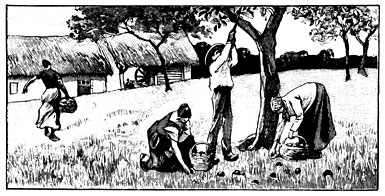A is for apple (and also for arsenic)
New England's apple orchards have always made good calendar art, conjuring up associations with health, purity, family farms, and—of course—Mom and apple pie. Few people look at apple orchards and think "Paris Green." No, that is not a reference to Michelin's "green guide" to the City of Light. Paris Green, a toxic compound made primarily of arsenic and lead, was once a popular fungicide and insecticide. It was applied liberally to fruits—apples in particular—for more than a century until a better pesticide came along. That pesticide, which made its debut in the 1950s, was DDT.

|
Renewed interest in the toxicity of arsenic in drinking water recently led investigators from Dartmouth's Center for Environmental Health Sciences to examine the legacy of arsenical sprays on old New Hampshire orchard sites. Well-water in the state has been found to contain elevated levels of the toxin, and orchards were a prime suspect as a source.
The evidence is now in, and the orchards have been vindicated, according to Christine Wong, a graduate student who worked on the study with three members of the earth science faculty. After analyzing soil profiles and stream sediment cores, and correlating that data with land-use histories, the group concluded that most of the arsenic sprayed on apple trees drifted to the ground beneath the trees and stayed put. In undisturbed orchards it is still there, in the top six to ten inches of soil, along with the lead component of the sprays. Wong reported these findings at the spring 2002 meeting of the American Geophysical Union in Washington, D.C.
Although the evidence that arsenic is relatively immobile in surface soils may seem comforting, Wong warns of another concern. Population pressures in New England are radically altering the landscape. Old orchards are being chopped down and dug up to accommodate housing developments.
"These sites have been fine while left alone for 50 or 60 years," Wong explains. "But if they're disturbed by bulldozers, will the arsenic be exposed to weathering, increasing surface runoff?" The investigators are now working on finding an answer to that question in a new study.
J.N.
